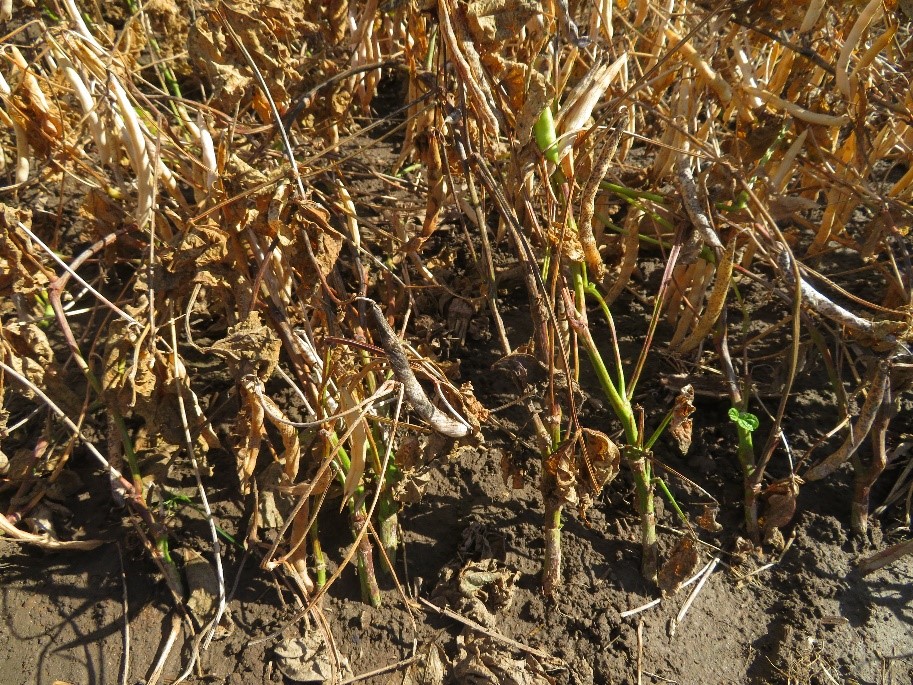North Dakota
Dry bean survey highlights 2020 growing year

N.D. – The most popular market classes of dry beans grown in North Dakota and Minnesota in 2020 were pinto, navy, black and kidney, a North Dakota State University Extension survey shows.
North Dakota produced the majority of pinto beans, while Minnesota produced the majority of kidney beans. Navy and black bean production was roughly equal in both states.
The top three pinto varieties were Monterrey, Vibrant (slow-darkening) and Torreon. The top three kidney varieties were Montcalm, Dynasty and Red Hawk. For navy beans, the top three varieties were HMS Medalist, T-9905 and Blizzard, and for black beans, the top three varieties were Eclipse, Black Tails and Zorro.
NDSU Extension conducted the survey in cooperation with the Northarvest Bean Growers Association.
“The ‘2020 Dry Bean Grower Survey of Production, Pest Problems and Pesticide Use’ provides important data on dry bean production, pest problems and pesticide use in Minnesota and North Dakota,” says professor and Extension entomologist Janet Knodel. “Survey respondents provided information on more than 146,000 dry bean acres in 2020, which represents nearly 14% of the 1.1 million acres planted in the Northarvest area.”
Production and Agronomy
The survey found that corn, wheat, dry beans, soybeans and sugarbeets were the most common crops in rotations during the past five years, with 80% of growers producing a dry bean crop in at least two of the past five years.
Most dry beans were grown using conventional tillage (71.4%), followed by minimum-tillage farming practices (20%), strip tillage (6.2%) and no-till (2.4%). Growers used cover crops on almost 25% of their reported acres, which continues an upward trend in cover crop use. The top reasons for cover crop use were soil conservation, moisture conservation and weed control.
Survey results show that ground rolling continues to be an important practice, particularly for pinto, navy and black bean production, with 56.5% of growers using ground rolling. Pre-emergence was the most popular (51.3% of growers) time for ground rolling.
Almost 77% of growers who used ground rolling also practiced direct harvest. For direct harvest, 50% of growers reported yield loss of 1% to 5%, 31% reported loss of 6% to 10% and 14.2% reported loss of 11% to 15%. For indirect harvest, 70.5% of growers reported loss of 1% to 5%, 21.3% reported loss of 6% to 10% and 3.3 % reported loss of 11% to 15%.
Most growers (80.7%) used a soil test prior to fertilizer application, and 29.8% used site-specific nutrient management. Rhizobium inoculant was used by 23.5% of growers.
“Frost was the most commonly reported production problem,” says Patrick Beauzay, Extension research specialist.
Frost affected 22% of the surveyed Northarvest acreage. Affected growers reported an average yield loss of 14.7% due to frost damage.
Water damage and diseases were the next most commonly reported production problems.
Pests
For insect pests, 41% of reported acres had no insect problems, which is good news, Knodel says. In dry bean acres that experienced insect problems, grasshoppers (44%) were the most frequently reported followed by leafhoppers (29.3%) and cutworms (10.6%). However, foliar insecticide use was low – 74% of dry bean acres did not receive any foliar insecticide – which indicates that insect pest pressure was generally not at levels that would cause economic loss.
White mold was the most commonly reported disease, affecting 49.7% of dry bean acres, while common bacterial blight was reported on 19.6% of dry bean acres and root rot was an issue on 5.1% of dry bean acres. No disease problems were reported on 13.6% of dry bean acres. At least one foliar fungicide application was applied to 89% of dry bean acres.
Kochia was the most commonly occurring weed and was reported on 22.8% of dry bean acres. Ragweed (19%), lambsquarters (17.3%) and waterhemp (10.1%) were the next most common weeds. While herbicide use is the most important weed control tactic, several growers incorporate nonherbicide weed control strategies, Beauzay says. Cultivation was used by 20.9% of growers, cover crops by 7.7%, manual labor by 7.7% and rotary hoe by 4.7%.
Scouting for insects, diseases and weeds was conducted on 98% of dry bean acres. About 50% of growers relied on crop consultants for scouting services, while about 50% of growers handled scouting themselves. Extension-recommended economic thresholds were followed by 96.6% of dry bean growers.





